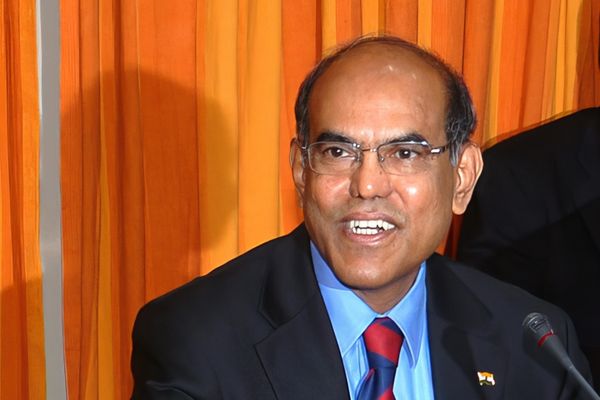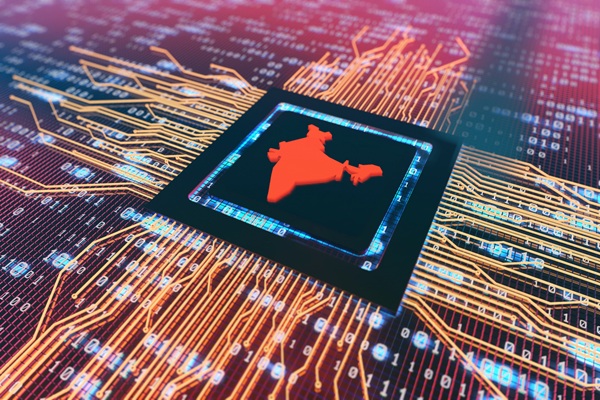.png)
MPC Needs Exchange Rate Lens In 2026 Overhaul, Says Ex-RBI Chief
Subbarao says ignoring the rupee in policy calculus is risky, and calls for a wider MPC mandate in the review of the framework in Part 2 of a four-part interview.


Kalyan Ram, a financial journalist, co-founded Cogencis and now leads BasisPoint Insight.
June 4, 2025 at 3:23 AM IST
India’s inflation-targeting regime may have brought discipline and credibility to monetary policy, but it now needs a serious rethink, starting with its blind spot on the exchange rate, says former Reserve Bank of India Governor Dr Duvvuri Subbarao.
In this second part of our four-part series on “India 2047: Raising the Game for a Developed Future,” Subbarao argues that the Monetary Policy Committee cannot afford to ignore the external sector any longer. With the currency and inflation locked in a feedback loop, the MPC’s current narrow remit risks making policy decisions that are out of sync with global and domestic realities.
"I'm not saying the MPC should manage the exchange rate," he clarifies. "But it must be formally mandated to consider external stability, alongside inflation and growth."
The call for reform comes as India gears up to review its inflation targeting framework in 2026.
Subbarao believes this is the time to lay the analytical groundwork by studying how the repo rate influences inflation outcomes and expectations and improving understanding of transmission lags.
While defending the core logic of the current regime, especially the need to anchor inflation expectations, Subbarao points to critical structural gaps. One is the MPC’s limited legal control: it sets only the repo rate, not the reverse repo, even though it is the two rates taken together that shape the corridor. Another is its lack of authority over liquidity conditions, although the RBI has established a healthy practice of taking the MPC’s opinion on the liquidity stance.
Both these lacunae, he says, demand legislative clarity.
Subbarao is unequivocal about the often-heard suggestion that volatile food prices be excluded from inflation targeting: removing food inflation would divorce policy from the lived experience of the average Indian.
"Food prices matter. They shape expectations. If you target something else, people will stop trusting the target," he says.
What follows is Part 2 of the Q&A on why the upcoming review must go beyond fine-tuning and confront some hard truths about institutional design, macroeconomic complexity, and India’s evolving policy priorities.
Edited excerpts:
Q: It’s been nearly 10 years since India formally adopted an inflation targeting framework. Critics say this has made the RBI overly focused on inflation, even at the expense of growth. Do you agree with this view?
A: No, I don't agree with that criticism. If you look at the inflation targeting framework that’s been given to the RBI, or more specifically, to the Monetary Policy Committee of the RBI, it is to maintain price stability within the target band, while keeping in view the concerns of growth. I believe the RBI Act has been amended to this effect. Over the last nine years that it's been in operation, the inflation targeting framework has largely delivered results.
The view that the inflation targeting framework is forcing the RBI to focus too much on inflation to the detriment of growth is not correct, because low and steady inflation—or price stability—is a necessary condition for growth. For growth, you need consumption and investment. Consumers and investors cannot make informed decisions if there is no price stability. So, I believe that price stability is a necessary condition for growth.
Understanding this is complicated because the relationship between growth and inflation is non-linear. At low levels, inflation is actually supportive of growth. High levels of inflation, on the other hand, actually hurt growth. So, we need to target that optimal rate of inflation. I believe 4% has been arrived at after much research. That target can of course be reviewed when the framework comes up for review next year.
There is another point in the context of this criticism. Monetary policy can only raise growth to the potential level. If, for example, the potential growth rate of India today is 7.5% and we’re actually growing at 6.5%, at best, the Reserve Bank, through its monetary policy, can raise the growth rate from 6.5% to 7.5%. But raising the potential growth rate itself from 7.5% to 8% or 9% is the job of the government, through its supportive fiscal and development policies. So, to blame the RBI or to say that the RBI is too focused on inflation to the detriment of growth is, I think, misinformed.
Q: The framework is due for review next year. Based on our experience, what changes should be considered?
A: I must preface my response by pointing out that the inflation targeting framework came after I left the RBI, so I don't have any ‘lived experience’ of that. But from my understanding of the inflation situation and the inflation targeting framework, I believe we need more research evidence.
More research, for example, on the impact of the repo rate on inflation, the impact of the repo rate on inflation expectations. We need more research also on monetary policy transmission and, of course, we need to review the appropriate inflation target. I think it's a good time to start that research so that it can feed into the review that's coming up next year.
Based on the experience to date, there is a case to review the mandate of the MPC. The monetary policy stance in India is determined by the repo rate, the reverse repo rate and the corridor defined by them. Note though that as of now, statutorily, the MPC has a say only on the repo rate. The reverse repo rate is set by the RBI independent of the MPC. What this means is that the MPC is accountable for delivering on the inflation target although it does not control all the instruments of monetary policy. This needs to be fixed.
Second, there is the issue of the pass through from the exchange rate. Exchange rate affects inflation, and inflation in turn affects the exchange rate. But the MPC’s mandate is restricted to inflation while RBI has to simultaneously take care of exchange rate stability as well. This could potentially cause tension. There is a case therefore to enlarge the MPC’s mandate to deliver on the inflation target, keeping in view concerns of growth and external sector stability.
The third area that needs a review is the liquidity stance. In monetary policy, there are two variables: the price of money and the volume of money. The price of money is the interest rate. The volume of money is the liquidity stance. As of now, under the Act, the Monetary Policy Committee has a say only on the price of money (repo rate), but it has no say on the stance. The RBI has established a healthy practice of taking the MPC’s view on the stance but it will be better if this is built into the Act.
Summing up, the law must be amended to enlarge the mandate of the MPC to include external sector stability while giving it a say on the reverse repo rate and the liquidity stance.
Q: But won’t expanding the MPC’s remit to include exchange-rate considerations create conflicts or confusion?
A: That’s a reasonable concern. But, I believe, the alternative, which is to maintain the status quo, is worse.
I'm not suggesting at all that the MPC must determine, or sit in judgment, on the minutiae of external sector management or that the RBI should take clearance from the MPC every time it takes any action towards external sector stability. This is impractical; it may even be counterproductive.
All I am saying is that whenever the MPC meets to determine the monetary policy stance aimed at price stability, it should be mandated to take into account external stability just like it is mandated to keep in view the concerns of growth.
Q: On the inflation measure itself, some suggest we drop food prices from the target, given how volatile and policy-insensitive they are. What’s your take?
A: I've heard that argument before, but I don't believe that is advisable.
Out of our population of 1.4 billion, at least 800 million are low to low-middle income. Food is a large component of their consumption basket; it is food prices that they experience in the market that set overall inflation expectations. If the RBI ignores food prices and targets some esoteric variable unconnected with people’s everyday experiences, it risks losing credibility.
There is also an argument that (a) monetary policy acts from the demand side; (b) food demand is inelastic; and (c) therefore, monetary policy is ineffective in controlling inflation stemming from food prices.
That argument is acceptable if food inflation is a one-off, but not acceptable if food inflation becomes endemic as is the case with us.
I believe we should stay with targeting headline inflation.
Continued in Part 3, which deals with exchange rate and how the central bank must do better.
Part 1 of the interview dealt with India’s ambition to become a developed country by 2047 and Part 4 with fiscal federalism.



